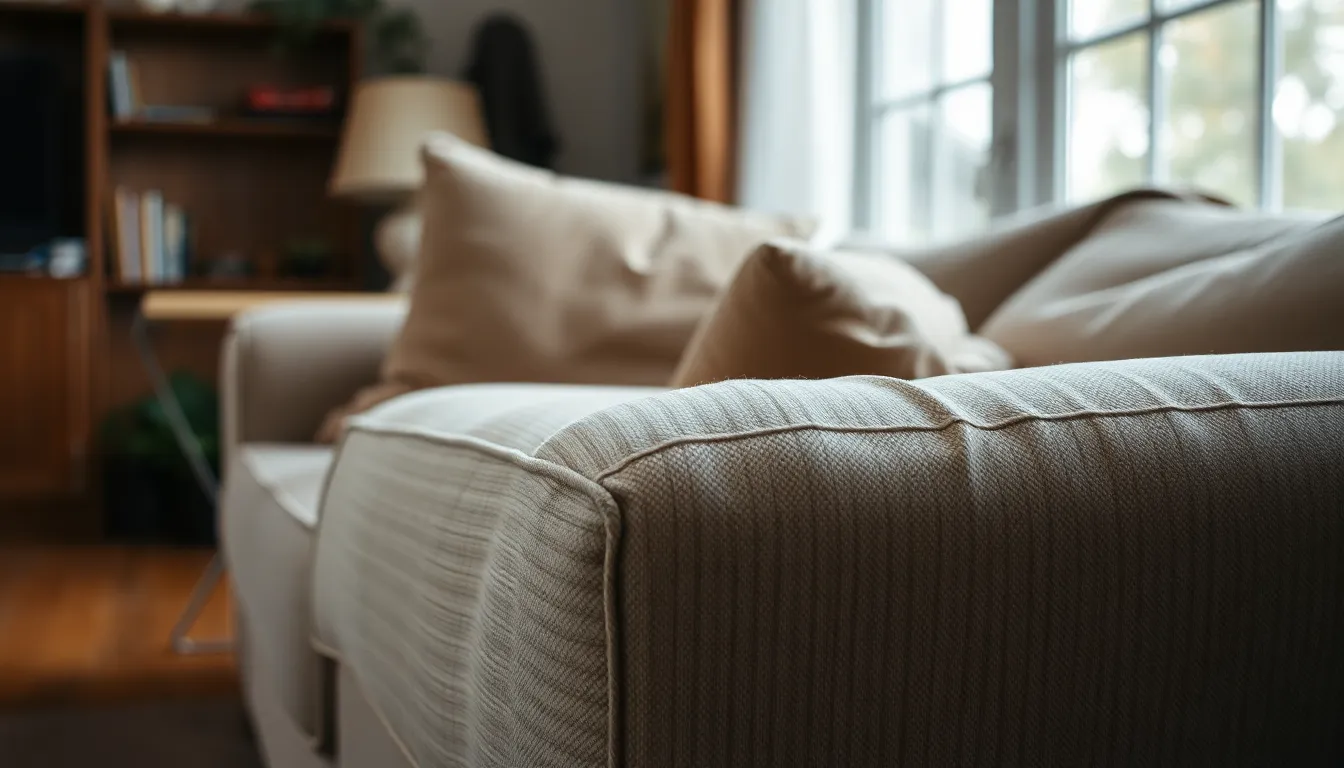Everyday life can feel like a battle against wear and tear. Whether it’s that trusty old couch that’s seen better days or the car that’s more rust than metal, it’s hard to ignore the signs of aging. But how do you tell if it’s just the natural wear and tear or something more sinister like damage? Spoiler alert: one’s just a sign of a life well-lived while the other might require a call to your insurance agent.
Table of Contents
ToggleUnderstanding Wear and Tear vs Damage
Wear and tear refers to the natural decline in condition over time due to regular use. Items like an old couch or a rusty car show signs that reflect their age. Factors such as weather, usage frequency, and material quality influence this process. While wear and tear is expected, it does not compromise the item’s overall functionality.
Damage, on the other hand, signifies a more severe issue. Damage occurs due to accidents, neglect, or manufacturing defects. This category includes items with cracks, dents, or structural failure. Seeking assistance from a professional may become necessary when damage affects safety or usability.
Assessing the distinction between wear and tear and damage aids in making informed decisions regarding maintenance and repairs. An understanding of these terms allows individuals to identify when a problem is merely cosmetic versus when it requires urgent attention. For instance, frayed fabric on a couch indicates wear and tear but does not impair its structural integrity. Conversely, water damage from a leak requires immediate remediation.
Insurance policies often specify coverage limitations relating to wear and tear versus damage. Many policies exclude wear and tear, emphasizing the importance of routine maintenance to prevent larger issues. Homeowners should routinely inspect their property to identify signs of aging that may escalate if left unaddressed. Regular maintenance can prolong the lifespan of various items, ensuring safety and functionality.
Key Differences Between Wear and Tear and Damage
Understanding the distinctions between wear and tear and damage is essential for maintaining items. Both terms represent different conditions that can affect property and belongings.
Definition of Wear and Tear
Wear and tear refers to the gradual deterioration caused by regular use over time. It’s a natural process that occurs in various items, such as furniture, appliances, and vehicles. Specific examples include faded upholstery on a sofa or minor scuffs on hardwood floors. These changes typically don’t affect the item’s structural integrity or function. Insurance companies often classify these conditions as normal depreciation, meaning they aren’t responsible for related claims. Recognizing wear and tear helps individuals prioritize routine maintenance to extend the lifespan of their possessions.
Definition of Damage
Damage indicates more severe issues resulting from accidents, neglect, or manufacturing defects. Instances of damage include water stains on ceilings from a roof leak or dents in a car caused by a collision. Such conditions usually require repair or replacement, as they can affect the safety or functionality of the item. Unlike wear and tear, damage often has a sudden onset and is usually covered by insurance policies. It’s critical to assess damage promptly to prevent further complications, as addressing issues early can decrease the risk of greater financial burden later.
Examples of Wear and Tear and Damage
Identifying wear and tear versus damage is crucial for homeowners and renters alike. Examples clarify these distinctions.
Common Instances of Wear and Tear
Faded upholstery on furniture indicates gradual use over time. Minor scuffs and scratches on hardwood floors reflect daily activity. Worn-out carpets often show signs of foot traffic, leading to thinning fibers. Appliances may exhibit slight deterioration, such as small dents or mild discoloration. Exterior paint may chip or peel due to exposure to the elements, illustrating natural aging. Each example highlights how wear and tear occurs with regular use, without affecting the overall functionality.
Common Instances of Damage
Water stains on ceilings often signal leaks that require immediate attention. Dents in vehicles may arise from accidents or collisions, necessitating repair for proper safety. Cracks in walls can indicate structural damage or foundation issues that must be addressed. Broken windows may result from extreme weather or vandalism, compromising home security. Torn fabric on furniture could arise from pet scratches or severe mishandling, demanding repair or replacement. Each situation demonstrates how damage differs significantly from typical wear and tear, often requiring professional intervention.
How to Identify Wear and Tear vs Damage
Identifying wear and tear versus damage requires careful observation. Start by examining items for gradual deterioration caused by regular use. Faded upholstery on a couch or slight scuffs on hardwood floors often indicate normal aging. These signs typically don’t affect an item’s structural integrity.
Next, assess the nature of any changes. Water stains on ceilings signal potential leaks and can represent damage needing immediate repair. Cracks in walls may suggest structural issues, while dents from accidents highlight neglect.
Consider the context of the observed conditions. Minor scratches on furniture rank as wear and tear, while torn fabric from mishandling points to damage. Regular inspections of possessions help keep track of these distinctions, which are critical for routine maintenance.
If unsure, review related policies. Insurance often does not cover wear and tear, emphasizing the need for timely repairs. Some items, like appliances or vehicles, benefit from professional evaluations to clarify whether the issue is wear and tear or damage.
Use a checklist of typical indicators. For wear and tear, include faded upholstery, worn-out carpets, and chipped exterior paint. For damage, note water stains, cracks, broken windows, or any other indications of neglect.
Making informed decisions on repairs becomes easier with these guidelines. In summary, developing a keen eye for these differences ensures proper maintenance and prolongs the life of valued possessions.
Conclusion
Understanding the difference between wear and tear and damage is crucial for maintaining belongings effectively. Recognizing that wear and tear signifies normal aging allows individuals to manage expectations while addressing minor issues. On the other hand, identifying damage is vital for preventing further complications and ensuring safety.
Regular inspections and a keen eye can help distinguish between these two categories. This proactive approach not only preserves the integrity of possessions but also aids in making informed decisions about repairs and maintenance. By prioritizing routine care and being aware of potential damage, individuals can extend the lifespan of their valued items and avoid costly surprises down the road.







